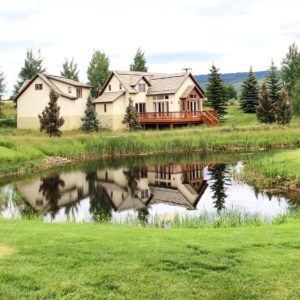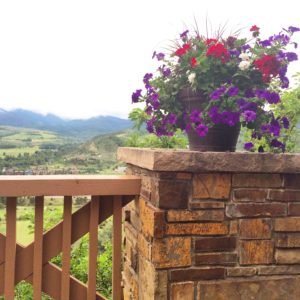 Jane Bishop Halteman is from Kern Road Mennonite Church in South Bend, Indiana, where she contributes to a weekly blog, Glimpses of Healing and Hope. She is a spiritual director, writer, photographer,active grandmother and member of the Mennonite Spiritual Directors Network.
Jane Bishop Halteman is from Kern Road Mennonite Church in South Bend, Indiana, where she contributes to a weekly blog, Glimpses of Healing and Hope. She is a spiritual director, writer, photographer,active grandmother and member of the Mennonite Spiritual Directors Network.
I’ve traveled in and out of Denver a number of times, both as a meeting planner decades ago and to visit my brothers’ families over the years, so I’m not a stranger to spending short periods of time at mile-high altitudes.
During a trip to visit family in Colorado in early July, I noticed the changing atmosphere as we made our way between Denver and higher altitudes in Cordillera. More breathless than usual on the stairs and feeling intensely the ups and downs of the walking path on the par-three golf course, I began to research how best to navigate the switch between altitudes.
An article entitled Ten Non-Medicated Ways to Cope with Altitude suggested that hydrating, eating regularly, slowing one’s pace and acclimatizing, among other things, go a long way toward preventing or overcoming altitude sickness.
As I read through the recommendations to keep altitude illness at bay, I observed parallels to healthy practices for the ascents and descents in life.
As you examine these four directives to ensure you are breathing well at high altitude, consider the ways you are aware of life’s ups and downs as holy ground. In the words of Richard Rohr, who speaks of turning information into transformation, effective spiritual disciplines hold the possibility of leading you to “new places with God, with life, with yourself.”
Stay thoroughly hydrated:

mountain chalet
“Drink before you get thirsty, as thirst usually occurs only after you are already dehydrated,” the altitude article admonishes. What might a parallel spiritual discipline look like? Perhaps you will find that walking a labyrinth or meditating will begin to hydrate your thirst for the Divine. Maybe experiencing the beauty of nature or human relationships will help focus your longing.
Eat regularly:
“Whether you feel like it or not, you must keep eating. Your body works hard to go uphill and carry extra weight; if you are traveling at altitude, the stresses on your body are even greater and you probably will feel less interested in food,” authorities on high altitude climbs tell us. How do you find ways to further cultivate your hunger for God even when that quest has lost its luster? “It is a miracle that I am here and that this piece of bread has come to me,” says Thich Nhat Hanh in this video which offers pointers on how to eat mindfully and live fully, from physical and spiritual perspectives.
Slow your pace:
“In order to enable you to continue (the ascent) steadily, listen carefully to your body … The key is to go at a slow and steady pace.” While slowing your pace on the mountain allows your body to adjust to the altitude change, slowing your life pace is likely to improve your ability to notice what’s important. Find a way that works for you to live in the moment, whether it be practicing gratitude, nurturing contentment, or learning a new style of prayer.
Acclimatize:
“Adjusting to higher altitude can take a few days. Consider spending a night or two at an intermediate altitude” or “plan calmer activities the first 24 to 48 hours of your trip.” Moderation applies to both physical and spiritual quests. Dare to follow your yearning for a more intimate journey with God. How might you begin to acclimate to new spiritual practices?

mountain flowers
My Rocky Mountain experience reminds me of Sherpa guides from Tibet and Nepal, “famous for the remarkable assistance they provide to Himalayan mountaineering expeditions. These guides are hardy, experienced, skilled. They know the joys and dangers of the ascent and descent. They understand the terrain, its beauty, its risks. They know where there are hazardous, slippery paths. They watch for signs of altitude sickness in climbers. They walk beside the explorer and help carry the load and share the burden. Sherpas are keenly aware that they tread on sacred ground: the mountain is a holy place, not to be ‘conquered,’ but to be approached with awe and respect.” (From Andrew D. Mayes’ Learning the Language of the Soul: A Spiritual Lexicon)
In what ways do you hydrate your spiritual life? What do you feed upon to enhance the journey? How do you slow your pace in order to pay attention to what’s most important? Have you found ways to incorporate new spiritual disciplines into your journey? Who has functioned for you as a Sherpa? For whom have you offered the loving care a Sherpa makes available to a climber?

